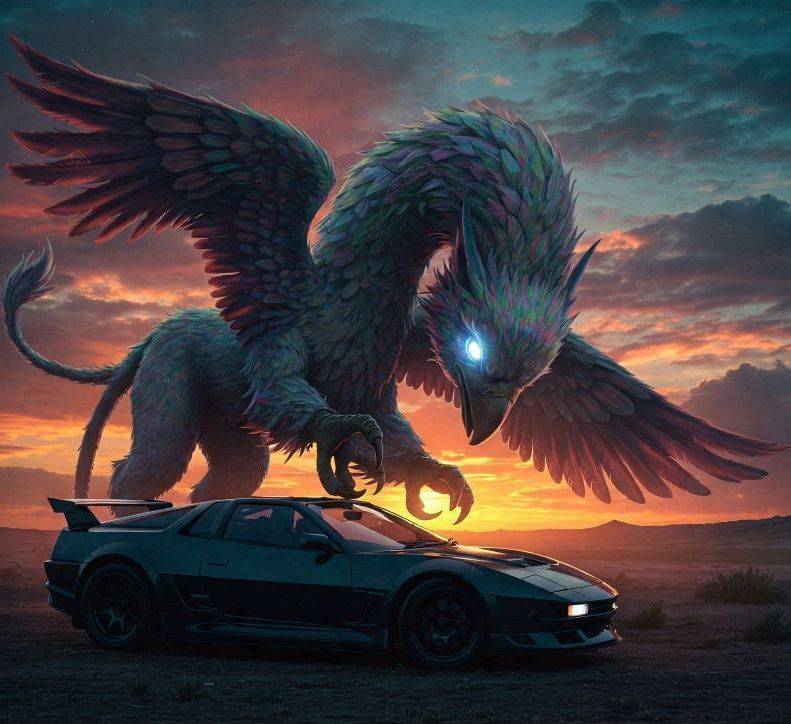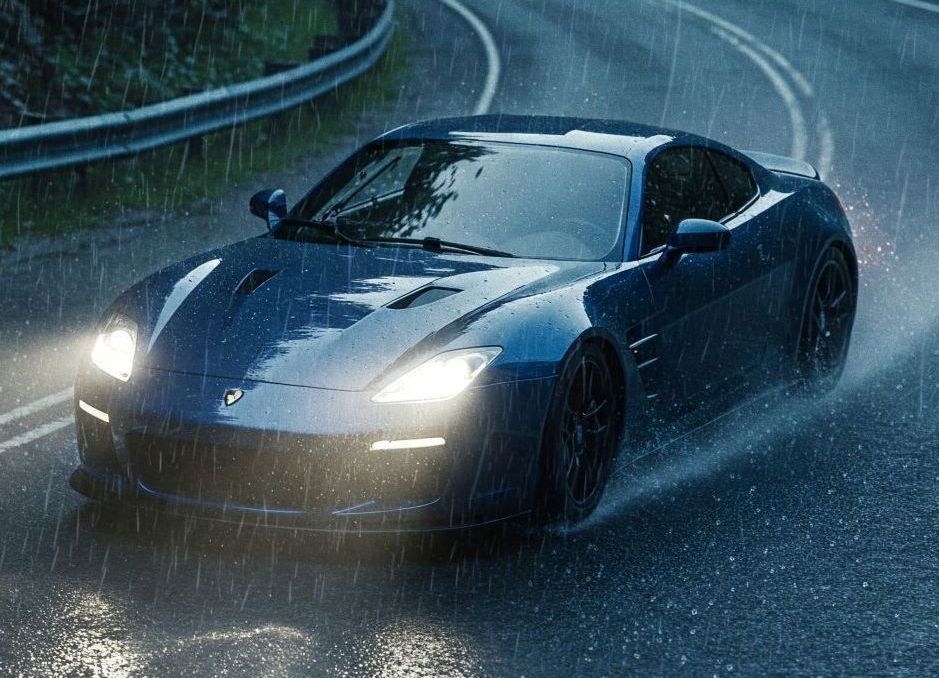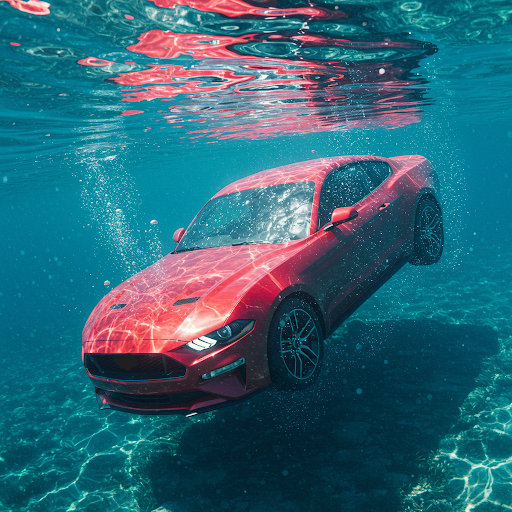Blog Layout
Cost-Saving Car Maintenance Tips Every Car Owner Should Know
Doug Stockman • March 8, 2024
We all know that owning a car is a significant investment. Not only do you have to consider the initial purchase price, but there's also the ongoing cost of fuel, insurance, and maintenance to think about. But what if we told you that with a little bit of knowledge and some regular attention, you could save a significant amount on your car maintenance costs?
At Select Source Insurance, we're not just about providing you with the best insurance options. We're also here to help you get the most out of your vehicle. So, buckle up as we take you through some cost-saving car maintenance tips that every car owner should know.
1. Regular Oil Changes:
One of the most basic yet crucial car maintenance tasks is changing your oil regularly. Fresh oil lubricates your engine, reduces friction, and helps keep it running smoothly. Neglecting this can lead to engine damage, which can be costly to repair.
2. Tire Maintenance:
Keeping your tires in good condition can save you money in several ways. Regularly checking your tire pressure can improve your car's fuel efficiency and prolong the life of your tires. Also, remember to rotate your tires every 5,000 to 8,000 miles to ensure even wear.
3. Brake Check:
Brakes are one of the most critical safety features of your car. Regular brake checks can prevent expensive repairs and potential accidents. If you notice any squeaking or grinding noises when you brake, it's time to get them checked.
4. Regular Car Wash:
Believe it or not, regularly washing your car can help maintain its value. Dirt and grime can damage your car's paintwork over time, leading to rust and other issues. A clean car is a happy car!
5. Battery Maintenance:
A dead battery can leave you stranded. Regularly check your battery's terminals for any signs of corrosion and clean them if necessary. Also, keep an eye on your battery's age. Most batteries need to be replaced every three to five years.
6. Regular Check-ups:
Just like us, our cars also need regular check-ups. Regular servicing can catch minor issues before they become major problems. It's a small investment that can save you a lot of money in the long run.
Remember, the key to saving money on car maintenance is prevention. Regular maintenance not only keeps your car running smoothly but also extends its lifespan, saving you money on potential repairs and even a premature replacement.
We hope you found these tips helpful. For more such insights, don't forget to follow and/or like our social media accounts. At Select Source Insurance, we're not just your insurance provider; we're your partner in ensuring you get the most out of your vehicle.

By Doug Stockman
•
February 10, 2025
Top 10 Insurance Myths Busted (by Yours Truly, Your Local Insurance Agent) Hey folks! Ready to debunk some myths that are floating around out there like rogue shopping carts in a hurricane. I hear it all the time – whispers in the grocery store, hushed tones at the PTA meeting. "Did you know…?" Nine times out of ten, "Did you know…?" is followed by something wildly inaccurate about insurance. So, let's grab our myth-busting ray guns and get to work! 1. Red Cars = Higher Insurance Rates: Seriously? Do you think insurance companies employ colorblind squirrels to set rates? The color of your car has absolutely nothing to do with your premiums. It's all about your driving record, the type of car (sports car vs. sensible sedan), and where you live. So, go ahead, rock that cherry red convertible. Just drive safely, okay? 2. "Full Coverage" Means I'm Covered for EVERYTHING: Ah, "full coverage." It's a catchy phrase, isn't it? But it's also a bit of a misnomer. "Full coverage" usually refers to a combination of liability, collision, and comprehensive coverage. It doesn't mean you're covered if your pet hamster spontaneously combusts in your car (yes, I've heard it all). Read your policy, people! Know what you're actually paying for. 3. My Home Insurance Covers EVERYTHING in My Home: See Myth #2 but replace "car" with "home." Your standard homeowner's policy is great for things like fire, theft, and some weather-related damage. But it probably won't cover your prized collection of antique thimbles if they're damaged by a rogue poltergeist. (Again, I've heard it all.) There are specific riders and endorsements for certain valuables, so chat with your agent. 4. Filing a Claim Will Automatically Jack Up My Rates: Not necessarily. One small claim might not affect your rates too much. It's the frequency of claims that raises red flags. Think of it like this: one fender bender is a "whoops," three fender benders are a "pattern." Insurance companies don't like patterns. 5. Renters Don't Need Insurance: Oh, renters, renters, renters. This one makes me cringe. Just because you don't own the building doesn't mean you don't own stuff. Your landlord's insurance covers the structure, but it doesn't cover your personal belongings. A good renter's policy is surprisingly affordable and can save you from financial ruin if your apartment catches fire, gets burgled, or, you know, invaded by those thimble-loving poltergeists. 6. Older Homes Are Always More Expensive to Insure: Not always! Sure, some older homes might have outdated wiring or plumbing, but many have been renovated and are perfectly safe. Insurance companies look at the condition of the home, not just its age. 7. I Don't Need Flood Insurance - I Don't Live Near Water: Newsflash: floods can happen anywhere. Even if you live miles from the coast, heavy rain can cause flash flooding. Standard homeowner's insurance doesn't cover flood damage. You'll need a separate flood insurance policy. 8. My Credit Score Doesn't Affect My Insurance Rates: Wrong! In most states, insurance companies use credit-based insurance scores to help predict the likelihood of you filing a claim. So, keep those credit scores high, folks! 9. If I Total My Car, I'll Get What I Paid For It: Nope. You'll get the current market value of your car, which might be less than what you paid for it, especially if it's been owned a few years. Also, if your loan amount is more than the value of your car this is where "gap insurance" comes in. It covers the difference between what you owe on your loan and what the insurance company pays out. 10. Insurance Agents Are All Sleazy and Just Want Your Money: Okay, okay, some of us might be a little… enthusiastic. But most of us genuinely care about protecting our clients. We want you to have the right coverage at the right price. So, don't be afraid to ask questions. That's what we're here for! So, there you have it – ten insurance myths, thoroughly busted. Now go forth and be informed! And as always, if you have any questions, give your friendly neighborhood insurance agent a call. (That's me!)

By Doug Stockman
•
February 6, 2025
10 Safety Tips for Driving in the Rain (Because Hydroplaning is So Last Season) Alright, listen up, lead foots and Sunday drivers alike. It's raining. Again. And unless you've recently sprouted gills or your car is amphibious (in which case, please send pics), you're gonna have to navigate this liquid apocalypse like the rest of us mere mortals. So, ditch the daydreaming about that tropical vacation and pay attention, because hydroplaning isn't a personality trait, and ending up in a ditch is a terrible way to spend a Tuesday. Remember, safe driving keeps you from injury and doesn't give your insurance rates another reason to go up. 1. Slow Your Roll (Like, Seriously, Chill): This isn't a Fast & Furious movie, Vin Diesel isn't waiting for you at the finish line, and your pizza will still be lukewarm even if you arrive five minutes later (tip: even warmer if you turned on your heated seats). The faster you go, the more likely you are to become intimately acquainted with a guardrail. Think of it this way: slow and steady wins the race... and avoids the tow truck. 2. Lights On (Even if it's Not "Dark"): Yes, Captain Obvious, it's the law. But beyond that, it makes you less likely to be mistaken for a rogue wave by other drivers. Plus, it gives you that cool, mysterious vibe. You know, the kind that says, "I'm a responsible adult who also happens to be an awe-inspiring driver." 3. Check Your Tires (Are They Bald? You're Gonna Have a Bad Time): Think of your tires as the shoes of your car. Would you wear flip-flops to climb Mount Everest? No. (Unless you're insane. And also, please send pics.) Check your tread depth. If your tires are balder than a cue ball, you're basically driving on ice, even if it's 70 degrees out. 4. Double the Following Distance (Seriously, Double It): Tailgating is a bad idea on a sunny day. In the rain? It's a recipe for disaster. Give the car in front of you enough space so you have time to react if they suddenly decide to audition for "America's Next Top Emergency Brake." 5. Avoid Cruise Control (Unless You Want to Lose Control): Cruise control is great for long, straight highways. Rainy, slippery roads? Not so much. You want to be in full control of your vehicle, not letting some robot make decisions for you when things get dicey. 6. Brake Gently (Don't Slam On the Brakes Like You're Trying to Stop a Runaway Train): Slamming on the brakes in the rain is a surefire way to initiate a spin cycle that would make your washing machine jealous. Apply the brakes smoothly and gradually. Think of it as a delicate dance with your car, not a wrestling match. 7. Steer Smoothly (No Jerking Allowed): Just like braking, steering should be a gentle art. Jerky movements are more likely to cause your car to lose traction and send you sliding sideways. Imagine you're carrying a tray of hot coffee. Smooth and steady wins the day (and prevents third-degree burns). 8. Be Wary of Puddles (They Could Be Deeper Than You Think): Puddles can hide all sorts of dangers: potholes and debris. Avoid them if you can. If you can't, drive through them slowly and steadily. And for the love of all that is holy, don't try to splash pedestrians. Karma is a real thing. 9. Visibility is Key (Wipers On, Fog Lights If Needed): Make sure your wipers are in good working order. If they're streaking or squeaking, replace them. They're cheap, and they make a world of difference. Most auto parts stores will install them free of charge if purchased in their store. And if visibility is really bad, use your fog lights (but remember to turn them off when the fog clears, or you'll blind oncoming drivers). 10. Stay Calm (Panic is Your Enemy): If you do start to hydroplane, don't panic. Take your foot off the gas, steer gently in the direction you want to go, and avoid slamming on the brakes. Remember, smooth and steady. Think of it as a test of your driving skills. You got this. (Probably.) So, there you have it. Ten tips to help you survive the next downpour. Now go forth and conquer the roads, my friends. And try not to wreck.

By Doug Stockman
•
February 5, 2025
Gap Insurance: Because Life Gives You Lemons (and Your Car Gets Totaled) Life throws curveballs. Sometimes those curveballs involve deer, rogue shopping carts, and the dreaded "your vehicle is totaled" verdict from your insurance company. And while your insurance might cover the cost of your car... well, let's just say it might not be enough to cover your loan debt (or that Hawaiian vacation you were planning). Enter: Gap Insurance, the mysterious force field that promises to save you from financial ruin (or at least a serious case of ramen noodles). Think of it this way: You buy a brand-new car. You're cruising down the highway, top down, singing along to your favorite tunes. Life is good. Then BAM! Disaster strikes. Your car is totaled. Your insurance company cuts you a check... but it's not enough to cover the car loan. You're still on the hook for a hefty chunk of change, leaving you feeling more "gaping hole in my wallet" than "gap year in Europe." Gap Insurance is basically your financial superhero. It swoops in, cape flowing, to cover the difference between what your insurance pays out and what you still owe on your loan. It's like having a secret weapon against the cruelties of car ownership. But is it worth the extra cash? That, my friend, is the million-dollar question. Pros: Peace of Mind (Kinda): Knowing you're covered if disaster strikes can offer a fleeting sense of tranquility. Avoid Ramen Noodle Ramen: Let's be honest, nobody wants to live on ramen noodles for the next five years. Flex on Your Friends: "Oh, my car got totaled? No biggie, I have Gap Insurance." (Okay, maybe don't actually flex on your friends.) Cons: It Costs Money: And let's be real, money doesn't grow on trees (unless you live in a magical forest, in which case, please share your location). Might Be a Waste of Cash: If you make a significant down payment and have a shorter loan term, you might be perfectly fine without it. Fine Print Nightmare: Deciphering the fine print can feel like trying to solve a Rubik's Cube while blindfolded. The Verdict? Ultimately, the decision to get Gap Insurance is a personal one. If the thought of being "underwater" on your car loan gives you night terrors, then it might be worth the extra cost. Many insurance companies offer Gap Insurance for a fraction of the cost at the dealership or bank. And remember, even with Gap Insurance, always drive defensively. Because let's face it, life is unpredictable, and sometimes, the only way to survive is with a healthy dose of sarcasm and a really good insurance plan. Disclaimer: This blog post is for entertainment purposes only and should not be considered financial advice. Consult with a qualified financial advisor for personalized guidance. P.S. If your car does get totaled, take solace in the fact that you now have an excellent excuse to buy that electric scooter you've always wanted.
© 2025
All Rights Reserved | Privacy Policy | Terms of Use
